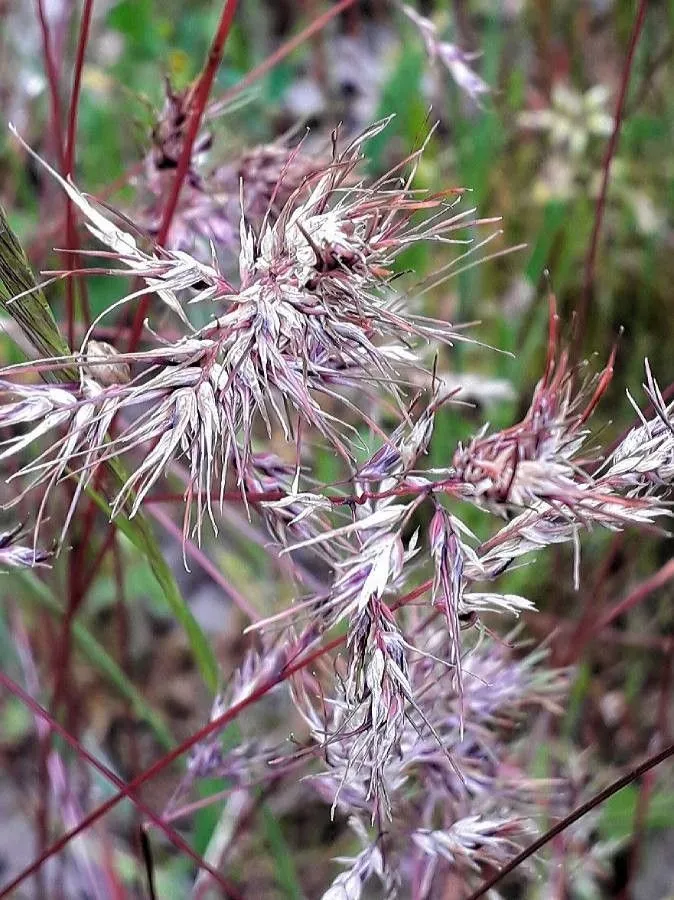
Author: L.
Bibliography: Sp. Pl.: 70 (1753)
Year: 1753
Status: accepted
Rank: species
Genus: Poa
Vegetable: Unknown
Observations: Europe to Xinjiang, Macaronesia to Himalaya, Cape Prov.
Bulbous bluegrass, formally identified by its scientific name Poa bulbosa, is a notable member of the Poaceae family. This grass species has an extensive geographical distribution, ranging from Europe to Xinjiang and Macaronesia to the Himalayas, even reaching as far as the Cape Province. The species was first described and officially recorded by the renowned botanist Carl Linnaeus in 1753, in his seminal work “Species Plantarum.”
Thriving in a variety of climatic conditions, Bulbous bluegrass often serves as a resilient and adaptable grass species. Its ability to colonize diverse environments from temperate regions to high-altitude Himalayan terrains highlights its ecological versatility. Although it is primarily found in Europe and Asia, its presence in the regions of Macaronesia and the Cape Province further underscores its adaptive capacity.
Poa bulbosa is perennial, meaning it persists year after year through a variety of seasons. This longevity is facilitated by its unique bulbous base, which allows the plant to store nutrients and water, aiding its survival in fluctuating environmental conditions. The bluegrass tends to form dense tufts and can be recognized by its slender, bluish-green leaves and intricate flowering structure that blooms typically in the spring.
Ecologically, Bulbous bluegrass plays a crucial role in preventing soil erosion due to its dense and robust root system. It also contributes to the habitats where it grows by providing cover and forage for various insect and animal species. Additionally, it holds potential value for pasture and land restoration projects, effectively supporting agricultural landscapes.
In conclusion, Bulbous bluegrass, Poa bulbosa, is a widely distributed species with significant ecological importance. Its resilience and adaptability make it an intriguing subject of study for botanists and ecologists alike, continuing to attract attention centuries after its initial documentation by Linnaeus.
Eng: bulbous bluegrass, bulbous meadow grass, bulbous poa, bulbous meadow-grass, bulbous meadowgrass, bulbous speargrass
Deu: knolliges rispengras
Dan: løg-rapgræs, løgrodet rapgræs
Spa: grama cebollera
Nld: knolbeemdgras, knolbeemdgras var. bulbosa, knolbeemdgras var. vivipara
Ita: poa bulbosa
Fra: pâturin bulbeux
Swe: knölgröe
Cym: gweunwellt oddfog
Nno: laukrapp
Nob: løkrapp
En: Bulbous bluegrass, Bulbous meadow grass, Bulbous poa, Bulbous Meadow-grass, Bulbous Blue Grass, Bulbous meadowgrass, Bulbous speargrass
Ar: قبأ بصيلي
Az: Soğanaqlı qırtıc
Be: Метлюжок цыбульны
Bg: Луковична ливадина
Ca: Poa bulbosa
Zh: Lin jing zao shu he, 鳞茎早熟禾
Cs: Lipnice cibulkatá
Da: Løg-rapgræs, Løgrodet rapgræs
Nl: Knolbeemdgras, Knolbeemdgras var. bulbosa, Knolbeemdgras var. vivipara
Fi: Sipulinurmikka
Fr: Pâturin bulbeux
De: Knolliges Rispengras, Zwiebel-Rispengras, Knolligenrispengras
He: סיסנית הבולבוסין
It: Poa bulbosa, Fienarola bulbosa, Gramigna bulbosa
Kk: Жуашықты қоңырбас
Lt: Gumbuotoji miglė
Nb: Løkrapp
Nn: Laukrapp
Fa: چمن پیازکدار
Pl: Wiechlina cebulkowata
Ru: Mjatlik lukovičnyj, Мятлик луковичный
Es: Grama cebollera
Sv: Knölgröe
Tr: Yumrulu salkım otu
Uk: Тонконіг бульбистий
Cy: Gweunwellt oddfog
Taken May 16, 2018 by Fejul Xeto (cc-by-sa)
Taken May 23, 2018 by jose (cc-by-sa)
Taken May 23, 2018 by jose (cc-by-sa)
Taken May 23, 2018 by jose (cc-by-sa)
Taken May 23, 2018 by jose (cc-by-sa)
Taken Mar 31, 2017 by Yoan MARTIN (cc-by-sa)
Taken May 3, 2022 by Pierre Bonnet (cc-by-sa)
Taken May 14, 2013 by Martin Bishop (cc-by-sa)
Taken Oct 22, 2022 by F. Manzano (cc-by-sa)
Taken Jan 9, 2022 by Alain Cervantes (cc-by-sa)
Taken May 8, 2021 by Antonia_ (cc-by-sa)
Taken May 6, 2020 by gabrimedi (cc-by-sa)
Taken May 4, 2021 by pietro27 (cc-by-sa)
Taken May 19, 2019 by Olivieri Pietrangelo (cc-by-sa)
Taken May 1, 2022 by Bernard Durbecq (cc-by-sa)
Taken Apr 18, 2015 by Tela Botanica − Pauline GUILLAUMEAU (cc-by-sa)
Taken May 22, 2016 by Tela Botanica − Yoan MARTIN (cc-by-sa)
Taken May 22, 2016 by Tela Botanica − Yoan MARTIN (cc-by-sa)
Taken Apr 19, 2016 by Tela Botanica − Yves PENIT (cc-by-sa)
Taken Jan 1, 1800 by Tela Botanica − Thierry Pernot (cc-by-sa)
© copyright of the Board of Trustees of the Royal Botanic Gardens, Kew.
© copyright of the Board of Trustees of the Royal Botanic Gardens, Kew.
© copyright of the Board of Trustees of the Royal Botanic Gardens, Kew.
Taken Dec 22, 2015 by EOL − Drepanostoma (cc-by-nc)
Taken Jul 10, 2015 by Tela Botanica − Yoan MARTIN (cc-by-sa)
Taken Jul 10, 2015 by Tela Botanica − Yoan MARTIN (cc-by-sa)
Taken May 22, 2016 by Tela Botanica − Yoan MARTIN (cc-by-sa)
Taken Jan 1, 1800 by Tela Botanica − Thierry Pernot (cc-by-sa)
Taken Apr 8, 2012 by Tela Botanica − Paul Fabre (cc-by-sa)
Taken Apr 26, 2015 by Tela Botanica − Gérard LEVESLIN (cc-by-sa)
Taken Mar 14, 2014 by Tela Botanica − Gilles CARCASSES (cc-by-sa)
Taken Jul 10, 2015 by Tela Botanica − Yoan MARTIN (cc-by-sa)
Taken Jul 10, 2015 by Tela Botanica − Yoan MARTIN (cc-by-sa)
Family: Myrtaceae Author: (F.Muell.) K.D.Hill & L.A.S.Johnson Bibliography: Telopea 6: 402 (1995) Year: 1995 Status:…
Family: Rubiaceae Author: Pierre ex A.Froehner Bibliography: Notizbl. Bot. Gart. Berlin-Dahlem 1: 237 (1897) Year:…
Family: Sapindaceae Author: Koidz. Bibliography: J. Coll. Sci. Imp. Univ. Tokyo 32(1): 38 (1911) Year:…
Family: Asteraceae Author: A.Gray Bibliography: Pacif. Railr. Rep.: 107 (1857) Year: 1857 Status: accepted Rank:…
Family: Fabaceae Author: Medik. Bibliography: Vorles. Churpfälz. Phys.-Ökon. Ges. 2: 398 (1787) Year: 1787 Status:…
Family: Aspleniaceae Author: (Cav.) Alston Bibliography: Bull. Misc. Inform. Kew 1932: 309 (1932) Year: 1932…